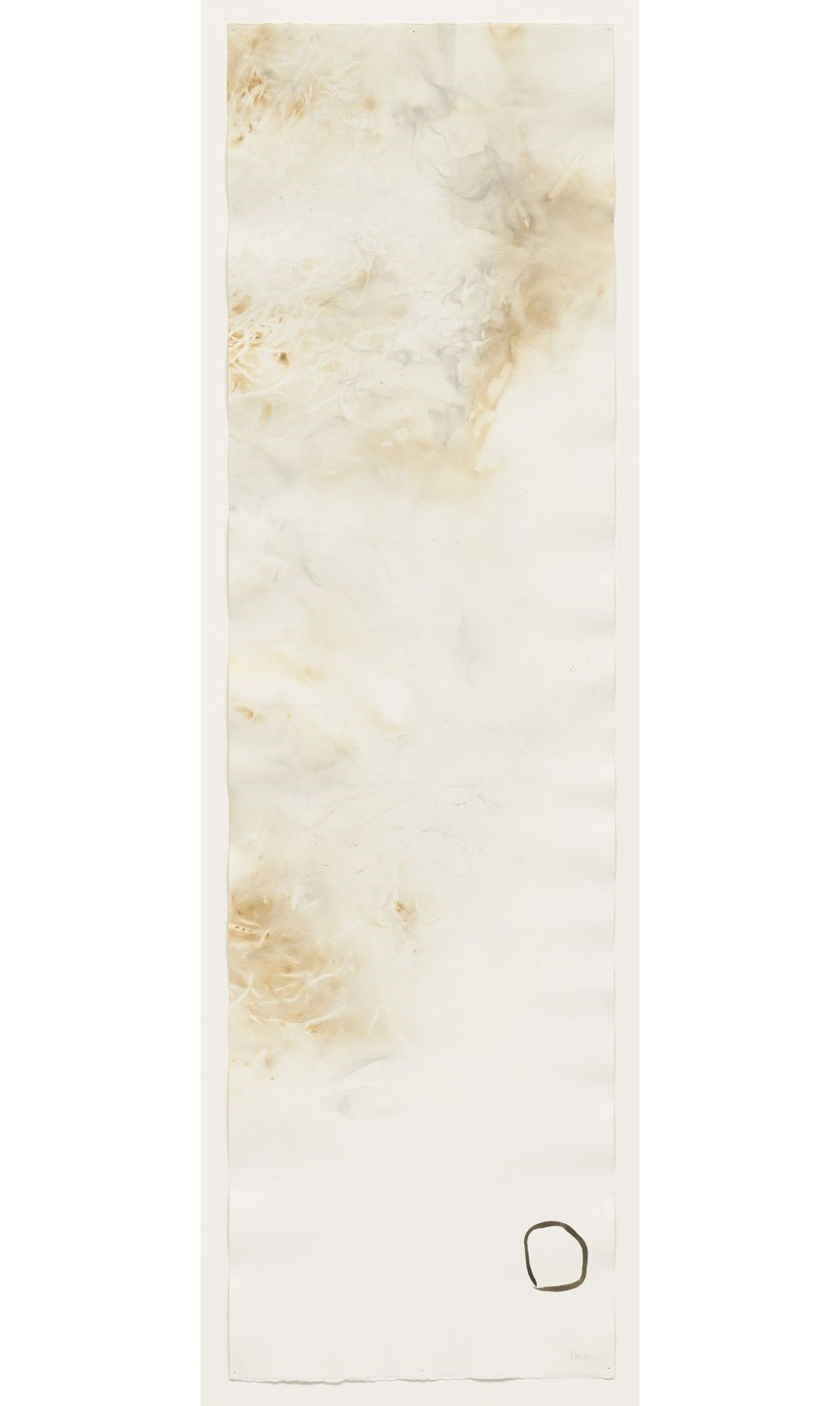
05 May River rock and smoke 4/13/90
Cage, J., 1990, River Rock and Smoke 4/13/90, Watercolour and smoke on paper, (MOMA)
This work demonstrates an index through the traced stone and billowing stains of smoke left on the paper; physical traces that move beyond representation. I imagine the work to smell smoky and feel sooty. The work has parallels with my own explorations of looking at the indices of my experience of the tree; in creating inks from the needles, of using the branches themselves to produce marks, and in using the paper itself as more than a surface on which to represent. John Cage’s series of works tracing stones in watercolour are also works of absence and presence; of brushstrokes surrounding and denoting that which is absent. The traced void of the stone with its thick ink outline is made to be more concrete than the presence of the smoke.
The stones are arranged on a grid, placed in a position chosen by elaborate subsets of occasionally computer generated, rules. This process appears to be a way of asking new questions within certain set parameters (Dillon, 2010) and producing something unpredictable from a strict structure. In my project the recursive returning to the tree as a landscape has with it set parameters of space and time. There are limited viewpoints of the tree, the light on the tree is within the parameters of the sun and the automatic lighting of the park. In isolation, the footsteps down the stairwell and to the base of the tree were counted and measured as the only movement of the day.
Cage’s work references Chinese paintings in the use of a scroll format and in the brushstroke of ink. It also echoes the form of traditional landscape as the eye winds its way up and back on the picture surface. These elements are of relevance in a material sense to my project but also of interest is a reference to questions of absence and presence explored in The great image has no form, or on the nonobject through painting (Jullien, 2009). In literati painting, through absence[1] the subject can appear “present-absent” simultaneously, it is both there and not there, and in this the “painter cuts short the exacting realism of the object” (p9). This concept offers possibilities to explore through the project around representation of landscape. Cage’s shifting use of the paint surface with the index of smoke and the traced stone also illustrates possibilities in forms of representation.
[1] Such as where a mountain is partially obscured by mist leaving an absence in the middle. By hiding the object in mist or fog it is neither there nor not there.



No Comments